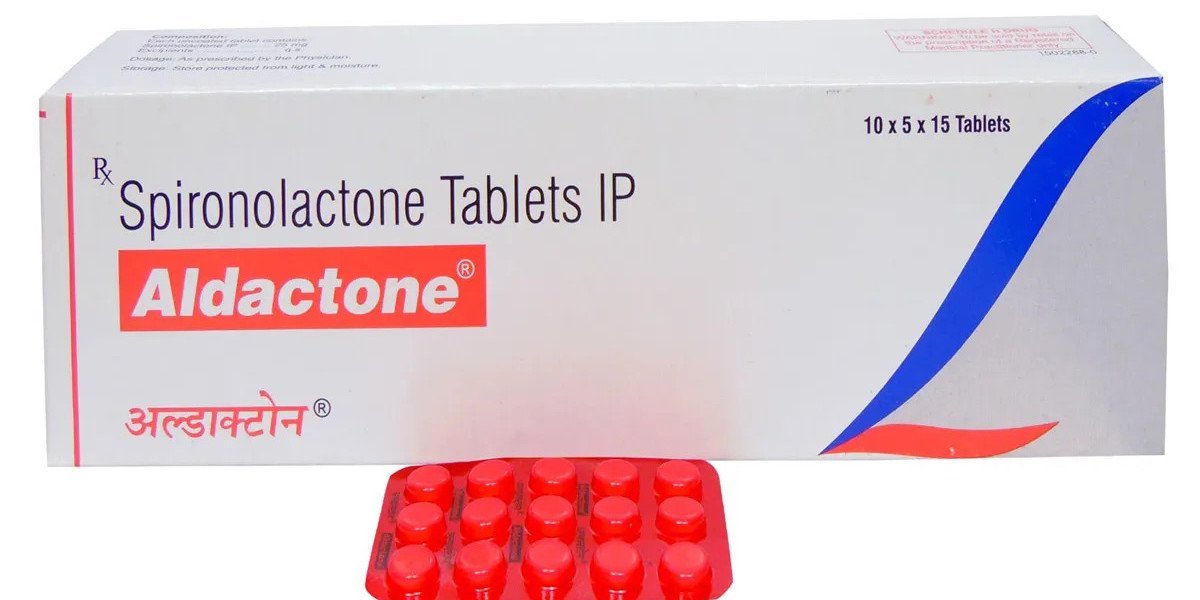Aldactone, with the active ingredient spironolactone, is a medication commonly prescribed to treat various conditions such as high blood pressure, heart failure, and edema (fluid retention). Aldactone 25 mg is a lower dosage commonly used to manage these conditions while minimizing the risk of side effects. In this article, we'll delve into the common benefits and side effects of Aldactone 25 mg, helping you understand its potential effects on your health and well-being.
Understanding Aldactone and Its Mechanism of Action
What is Aldactone?
Aldactone, also known by its generic name spironolactone, belongs to a class of medications called potassium-sparing diuretics. It works by blocking the effects of aldosterone, a hormone produced by the adrenal glands that regulates sodium and potassium balance in the body. By blocking aldosterone, Aldactone promotes the excretion of sodium and water while retaining potassium, thereby reducing fluid retention and lowering blood pressure.
Common Uses of Aldactone 25 mg
Aldactone 25 mg is commonly prescribed to manage various conditions, including:
Hypertension (High Blood Pressure): Aldactone helps lower blood pressure by promoting the excretion of excess sodium and water from the body, thereby reducing fluid volume and easing the workload on the heart.
Edema (Fluid Retention): Aldactone helps reduce swelling and fluid buildup in conditions such as heart failure, liver cirrhosis, and kidney disease by increasing urine output and decreasing fluid retention.
Common Benefits of Aldactone 25 mg
1. Effective Blood Pressure Management
Aldactone 25 mg is effective in managing hypertension (high blood pressure) by helping to lower blood pressure levels. By reducing fluid volume and easing strain on the heart, Aldactone can help prevent complications associated with uncontrolled hypertension, such as heart attack, stroke, and kidney damage.
2. Reduction of Edema and Swelling
For individuals with conditions causing fluid retention, such as heart failure or liver disease, Aldactone 25 mg can help reduce swelling and fluid buildup. By promoting diuresis (increased urine production), Aldactone helps eliminate excess fluid from the body, relieving symptoms of edema such as swelling in the legs, ankles, or abdomen.
3. Preservation of Potassium Levels
Unlike other diuretics that can deplete potassium levels in the body, Aldactone is potassium-sparing, meaning it helps retain potassium while promoting the excretion of sodium and water. This can be beneficial for individuals at risk of potassium depletion, such as those taking other medications that lower potassium levels or individuals with certain medical conditions.
Common Side Effects of Aldactone 25 mg
1. Hyperkalemia (High Potassium Levels)
One of the most significant risks associated with Aldactone is hyperkalemia, or high levels of potassium in the blood. Because Aldactone helps retain potassium, excessive potassium buildup can occur, leading to symptoms such as weakness, fatigue, irregular heartbeat, and muscle cramps. Monitoring potassium levels regularly is essential to prevent complications associated with hyperkalemia.
2. Gastrointestinal Disturbances
Common gastrointestinal side effects of Aldactone 25 mg may include nausea, vomiting, diarrhea, or stomach discomfort. These side effects are usually mild and temporary, but they may be bothersome for some individuals. Taking Aldactone with food or milk can help minimize gastrointestinal upset.
3. Dizziness or Lightheadedness
Some individuals may experience dizziness or lightheadedness, especially when standing up quickly from a sitting or lying position. This is due to changes in blood pressure and fluid balance caused by Aldactone. Taking precautions such as rising slowly from a seated or lying position can help reduce the risk of dizziness.
Managing Side Effects and Maximizing Benefits
1. Regular Monitoring
Regular monitoring of blood pressure, kidney function, and potassium levels is essential for individuals taking Aldactone 25 mg. Your healthcare provider may perform blood tests periodically to assess your response to treatment and monitor for any potential side effects.
2. Follow Healthcare Provider's Instructions
It's crucial to follow your healthcare provider's instructions regarding the dosage and administration of Aldactone 25 mg. Take the medication exactly as prescribed, and do not adjust your dose or stop taking Aldactone without consulting your healthcare provider.
3. Maintain a Healthy Lifestyle
In addition to taking Aldactone, maintaining a healthy lifestyle can help maximize its benefits and reduce the risk of side effects. This includes eating a balanced diet low in sodium, engaging in regular physical activity, managing stress, and avoiding excessive alcohol consumption.
Conclusion
In conclusion, Aldactone 25 mg is a commonly prescribed medication used to manage hypertension and edema by promoting diuresis and reducing fluid retention. While Aldactone offers several benefits in managing these conditions, it can also cause side effects, particularly hyperkalemia and gastrointestinal disturbances. By understanding the potential benefits and side effects of Aldactone 25 mg and following your healthcare provider's instructions, you can optimize its effectiveness while minimizing the risk of adverse reactions.
 AdBlock Detectado
AdBlock Detectado








